Motivation
In the last year space agencies in the United States, Europe, China, Japan and India have announced their intention to resume human exploration of the Solar system, beginning with the Moon and perhaps ultimately moving on to Mars. But travel beyond the immediate vicinity of the Earth carries significant risks for astronauts, not the least of which is the exposure to sometimes high levels of radiation. Now a team of scientists at the Rutherford Appleton Laboratory are set to construct an experimental plasma magnetic shield that would protect explorers in their journeys between the planets.
The team has also been investigating naturally occurring examples of plasma deflector shields, or "mini-magnetospheres", on the Moon itself.
This has lead to a new understanding of how a practical active (electromagnetic) deflector shield could be put on board a manned interplanetary spacecraft.
Find out more about ESA's AURORA Program
The Luck of Apollo
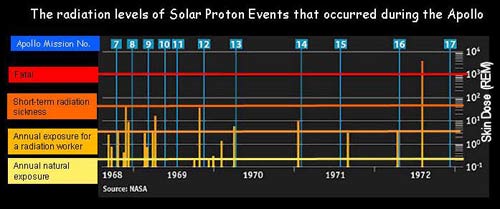
The timing of the Apollo Moon Missions compared to the occurance of solar proton events
Cosmic rays and radiation from the Sun itself can cause acute radiation sickness in astronauts and even death. Between 1968 and 1973, the Apollo astronauts going to the moon were only in space for about 10 days at a time and were simply lucky not to have been in space during a major eruption on the sun that would have flooded their spacecraft with deadly radiation. In retrospect Neil Armstrong’s ‘one small step for Man’ would have looked very different if it had.
Solar storm impacting the Earth's Magnetosphere
On the International Space Station there is a special thick-walled room to which the astronauts have had to retreat during times of increased solar radiation. However on longer missions the astronauts cannot live within shielded rooms, since such shielding would add significantly to the mass of the spacecraft, making them much more expensive and difficult to launch. It is also now known that the ‘drip-drip’ of even lower levels of radiation can be as dangerous as acute bursts from the sun.
On the surface of the Earth we are protected from radiation by the thick layers of the atmosphere. And the terrestrial magnetic field extends far into space, acting as a natural ‘force field’ to further protect our planet and deflecting the worst of the energetic particles from the Sun by creating a 'plasma barrier'.
Finding a Solution
A mini magnetosphere surrounding the Starship Enterprise
Now an international team of scientists lead by members from RALSpace plan to mimic nature. They will build a miniature magnetosphere in a laboratory to see if a deflector shield can be used to protect humans living on space craft and in bases on the Moon or Mars.
In order to work, an artificial mini-magnetosphere on a space craft will need to utilise many cutting edge technologies, such as superconductors and the magnetic confinement techniques used in nuclear fusion.
Thus science is following science fiction once again. The writers of Star Trek realised that any space craft containing humans would need protection from the hazardous effects of cosmic radiation. They envisioned a ‘deflector shield’ spreading out from the Starship Enterprise that the radiation would bounce off. These experiments will help to establish whether this idea could one day become a practical reality.
How it works
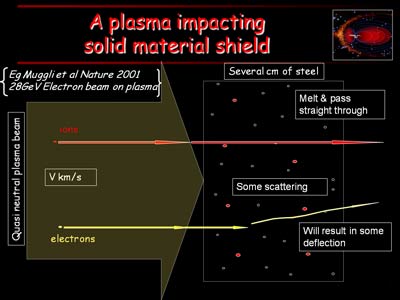 A plasma impacting solid material shield
A plasma impacting solid material shield
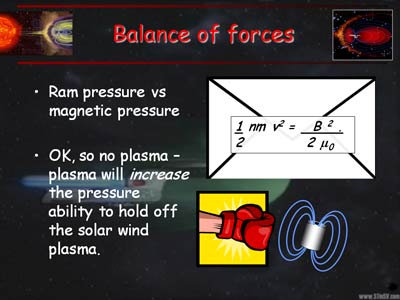 Balance of forces
Balance of forces
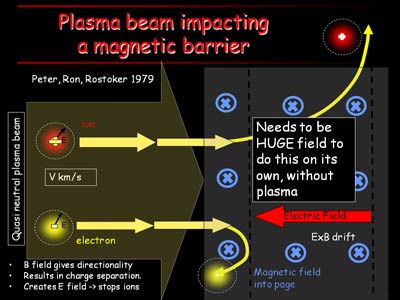 Plasma beam impacting a magnetic barrier
Plasma beam impacting a magnetic barrier
 Plasma impacting a plasma (1)
Plasma impacting a plasma (1)
 Plasma impacting a plasma (2)
Plasma impacting a plasma (2)
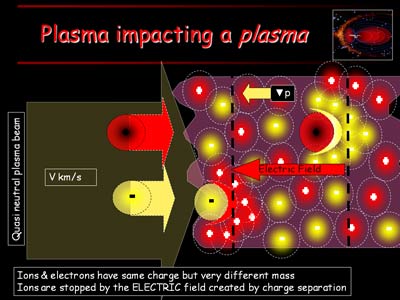 Plasma impacting a plasma (3)
Plasma impacting a plasma (3)
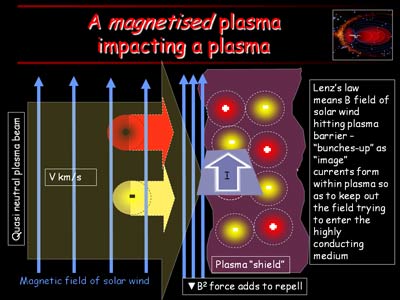 A magnetised plasma impacting a plasma (1)
A magnetised plasma impacting a plasma (1)
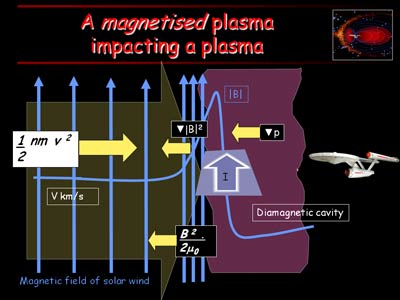 A magnetised plasma impacting a plasma (2)
A magnetised plasma impacting a plasma (2)
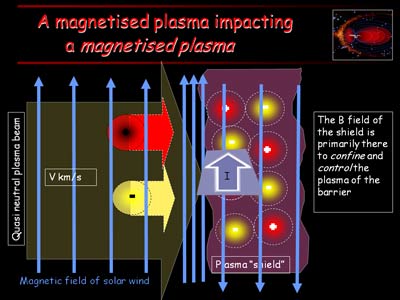 A magnetised plasma impacting a plasma (3)
A magnetised plasma impacting a plasma (3)
For more information please contact: RAL Space Enquiries
